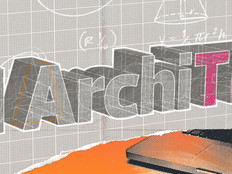K–12 E-Rate Requests Slow Even As Money Is Available
While E-rate offers $3.9 billion annually for internet connectivity, Wi-Fi equipment and related tech, funding requests have steadily dropped for three years — from $3.6 billion in 2016 to $2.8 billion in 2018, according to Funds for Learning.
Unused funds are rolled over into the next year, so there is plenty of money available for districts that need it, says Brian Stephens, the E-rate consulting firm’s senior compliance analyst.
“Right now, the program is able to fund every application that has been submitted and follows the rules,” he says.
The decline in applications is due to funding caps for Category Two equipment and phase-out of support for voice services, plus the perception that E-rate is complex, Stephens says.
MORE FROM EDTECH: Find more on how to apply and prepare for E-Rate funding.
Important E-Rate Forms K–12 Schools Should Know
The application process for E-Rate can be tricky. With so many different pathways, it can be easy for K–12 school administrators to know where to start.
In order to guarantee K–12 districts can at least start the application process for E-Rate funding on the right track, here are some important forms that applicants should keep an eye on:
- Form 470: Filing a Form 470 starts the competitive bid process. Once this form is filed, applicants can solicit bids. After filing the form, schools must wait 28 days before reviewing bids.
- Form 471: After schools select their service providers and vendors, they must have signed contracts before submitting Form 471. The form requires documentation that details the cost, specific products and services schools want to purchase and where they will be deployed.
- Form 486: Once applications are reviewed, the Universal Service Administrative Co., which manages E-rate for the FCC, issues a funding commitment decision letter. If the project is approved, schools must submit Form 486 before USAC will make payments. With Form 486, schools must confirm the start date of services and that they are in compliance with the Children’s Internet Protection Act.
- Form 498 and Form 472: Applicants can pay their service provider or vendor in full and get reimbursed by filling out Form 498 and providing banking information to USAC. They then fill out From 472 to get paid. Alternatively, a service provider or vendor can handle the reimbursement process with USAC directly. In that case, districts pay the service provider a discounted amount for services.
To learn more about how K–12 school districts can use E-rate funding to improve their network speeds, read School Districts Take Advantage of E-Rate’s Category One Funding.








